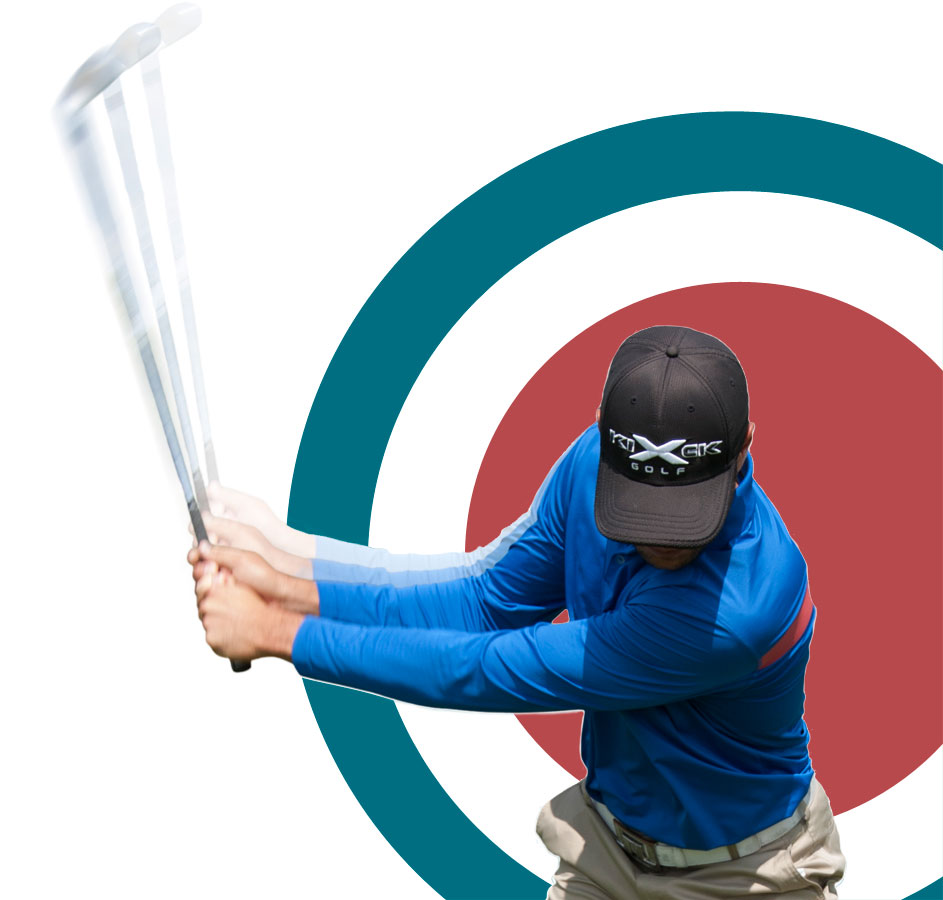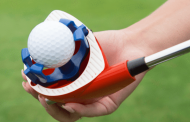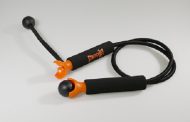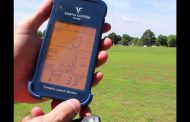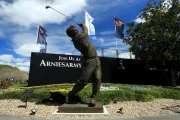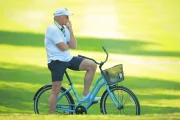“Learn to master your hands so that you can have command of the clubface. If you have command of the clubface you can have command of the ball. Command the ball, you have command of the game.” Sounds easy enough…right!
In reality it’s easy if you learn how to discipline your hands. Because the hands are entirely the only portion of the body holding the golf-club it’s imperative that they experience exactly what to do. If they’re not educated, then striking a shot where you wish is strictly an accident!
So, how do you develop the hands? First of all, don’t use a golf-club to condition with. As an alternative use a tennis racket, table-tennis racquet, or anything that’s racket like. The face of the racket emulates the clubface, but on a much greater scale, it’s easier to monitor.
There are only three things a clubface can do,
1. Layback
2. Close
3. Hook
Each of these movements create different trajectories but straight ball flight. Layback creates the highest trajectory while closing creates the lowest. Layback can be “under rolled” – the push fade – and closing can be “over rolled” – the duck hook.
These movements also have names linked with them and they are known as Hinge Actions. Horizontal Hinging is closing and acts like a door opening and closing – a full roll feeling. Vertical Hinging works like a pendulum, a sort of “reverse” roll feel. And finally, Angled Hinging acts like a canoeist paddle – no roll in either direction.
On their respective planes there’s always a no roll in either direction. But when they’re laid on an Inclined Plane, where we play golf on, they adopt the device characteristic of that plane. For example, Horizontal Hinging on its affiliated plane doesn’t open or close but once placed on the Inclined Plane it’s turned to the right and rolled to the left. An over roll would result in a suffocating hook! And so any type of curve begins with either an over roll or under roll of the chosen Hinge Action.
Now let’s get going training the hands: Take hold of your racket and hold it in your left hand straight out in front of you so that the left arm is horizontal to the ground and that the Racket face is at a right angle to the imaginary target line. Now move your left arm and hand to the right across your chest. Did the racket face turn or roll? Of course it did not. That is because it is on its associated plane. Immediately move it back towards the target. Did it turn or roll? The answer is still no!
Now hold the racket and get into your address position. Take your left arm back like you did earlier until it is a mirror image of what you did on the horizontal plane. This time the left hand and racket face had to “turn” to correspond, didn’t they. You see, whatever the face angle is on its associated plane has got to correspond when laid on the Inclined Plane. So with Horizontal Hinging there’s a “feeling” of turning to the right and rolling to the left. Your task is to not over roll the clubface.
Once you’ve acquired a command of educated hands then the hands don’t care what you place in them. It could be a tennis racket, baseball bat, or golf club. If they’re Educated they’ll react properly.
Chuck Evans – Executive Director of Instruction – Medicus Golf Institute


